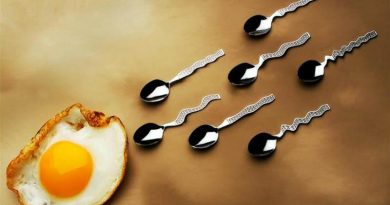How is Infertility Diagnosed?
Originally posted 2023-05-04 11:29:59.
Doctors look at men and women in different ways to figure out if they can have children.
Evaluating Female Fertility
A health care provider will ask a woman specific questions about her health history to figure out if she is fertile. These things are:
- Prior pregnancies
- Prior miscarriages
- How often does her period come every month?
- having pain in the pelvis
- Whether she has unusual bleeding or discharge from the womb
- Whether she has had pelvic infections or pelvic surgery before
Keep reading : Sexologist in Bangalore
A pelvic exam or pelvic ultrasound, a Pap test, and blood tests can all be part of the first screening. The health care provider may look for signs of milk production in the breasts, which could indicate a hormone imbalance, as well as other physical signs of polycystic ovary syndrome and other conditions that affect fertility.
You will be interested on: Ayurveda Treatment for Female Infertility
A doctor or nurse can also do the following tests and evaluations in the lab:
- A blood test can tell how much of a hormone called progesterone a woman has on the 23rd day of her period. This test can tell if ovulation has happened and how much of this hormone the ovaries are making.
- Other hormones that are important for fertility may also be checked. How many eggs a woman still has can be estimated by how much follicle-stimulating hormone (FSH) and anti-Müllerian hormone (AMH) are in her blood. FSH makes eggs, and a hormone called estradiol makes more. If a woman has high FSH levels, it could mean that her ovaries have stopped working or that she is going through perimenopause or menopause. If a woman has low levels of FSH, it could mean that she has stopped making eggs. AMH is only made in ovarian follicles, so the amount of AMH in the blood shows that follicles are growing.
- Other tests might include looking at the fallopian tubes to see if there is a blockage that keeps the egg from moving out of the ovaries. Among them are the following:
You will be Interested on : Sexologist in Guwahati
– X-ray hysterosalpingogram (pronounced HISS-tuh-roh-sal-PING-goh-gramme) A radiographic dye is injected into the cervix to fill up the uterus. If there are no blockages in the fallopian tubes, the dye will flow out of the end of the tube and into the peritoneal cavity. X-ray fluoroscopy is used to watch how the dye moves.
– Laparoscopy, pronounced “lap-uh-ROS-kuh-pee,” is a surgery in which a small viewing tool called a “laparoscope” is inserted through a small cut in the abdomen to look at the female reproductive organs. If the procedure shows that the fallopian tubes are blocked, the blockages can be fixed by surgery using tools that are attached to the laparoscope.
- A doctor or nurse may look at the inside of the uterus to see if there are scars, uterine fibroids, or polyps. The uterus is checked out in the following ways:
– Ultrasound of the womb Using sound waves, an ultrasound looks at the organs inside the body. When a wand is put into the vagina, sound waves are sent through the body. This lets a doctor see the uterus, ovaries, and other parts of the female reproductive system better.
– Hysteroscopy (pronounced hiss-tuh-ROS-kuh-pee) (pronounced hiss-tuh-ROS-kuh-pee) A hysteroscope is a long, thin camera that is put into the uterus through the vagina.
– Saline sonohysterogram (pronounced sah-noh-HISS-tuh-roh-gramme) During this procedure, sterile saline is injected into the cervix to fill up the uterus. When the uterus is full, it is easier to see the lining inside. With transvaginal ultrasound, the pelvic organs can be seen. At the same time, fluid can move into the peritoneal cavity, which shows that at least one tube is open.
- Health care providers may test a woman over 35 to see how many follicles she still has or if her follicles are ready to release an egg. For this kind of test, a transvaginal ultrasound is used to look at the ovaries, and hormone levels in the blood are checked on certain days of the menstrual cycle.
Keep reading: Female Infertility Treatment in Bangalore
Evaluating Male Fertility
In order to figure out if a man is fertile, doctors look for signs of hormone deficiency, such as increased body fat, less muscle mass, and less hair on the face and body. There are also questions about the man’s health history in the evaluation, such as:
- Past injury to the testicles or penis
- Recent high fevers
- Childhood diseases, such as mumps
- Low sexual desire (libido)
Keep reading : Sexologist in Hyderabad
A physical examination of the testicles and penis can help find problems like:
- Infection, signalled by discharge or prostate swelling
- Hernia
- Malformed tubes that transport sperm
- Hormone deficiency, as indicated by small testes or a lack of facial and body hair
- presence of a mass in the testicles
- Varicocele (abnormal veins in the scrotum)
You will be interested on: Ayurveda Treatment for Male Infertility
A doctor or nurse may also ask a man to give a sample of his sperm so they can see how healthy and good they are. For a man to give a sample of his sperm, he must not ejaculate for about 48 hours before the test. He then gives a sample by either masturbating into a cup or having a sexual encounter with a special condom that collects sperm without hurting them. A man may need to give more than one sample of sperm because the amount of sperm he makes changes over time depending on his health, activities, and stress level.
Keep reading: Male Infertility Treatment in Koramangala
Some other tests could be:
- Hormones in the blood, such as testosterone, follicle-stimulating hormone, thyroid hormones, and prolactin, are measured. A testicle biopsy is also done. A needle is used to get sperm out of the testicle by a health care provider.
- Testing for genes. Before starting fertility treatments, a health care provider may do genetic testing if there are no or very few sperm in the sperm. Testing can find problems with the chromosomes that could lead to a lack of sperm or problems with how children grow and develop.
Related Links :
- Ayurveda Infertility Treatment Clinic in Shimoga
- Azoospermia Nil Sperm Treatment In Ayurveda
- How To Get Pregnant If You Have PCOD
- Ayurveda Infertility Treatment Clinic in Isa Town
- Ayurveda Infertility Treatment Clinic in Badagabettu
- Ayurveda Infertility Treatment Clinic in Perambalur
- Ayurveda Infertility Treatment Clinic in Savanur
- Ayurveda Infertility Treatment Clinic in Hoshiarpur
- Ayurveda Infertility Treatment Clinic in Hoora
- Ayurveda Infertility Treatment Clinic in Ankola





